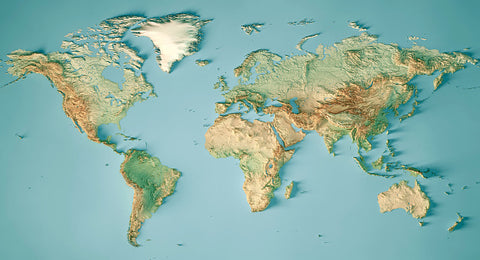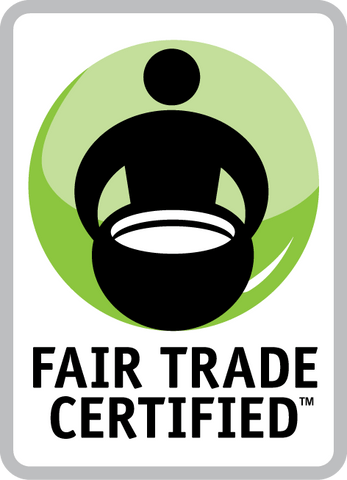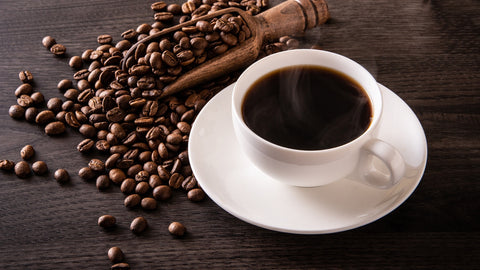
Perhaps you've heard of third wave coffee? Third wave is the industry's name for specialty coffee that emphasizes taste in the cup while celebrating coffee’s growers and producers. It's been going on since roughly 2010. It seeks to employ and support sustainable relationships that care for people along the entire supply chain
It’s a good thing. There is more outstanding coffee available now than at any time in history. But with that outstanding coffee comes a new challenge of how to communicate that quality to consumers.
Unfortunately, third wave coffee has become a bit …precious. Intimidating. Pretentious even.
I’ve been there. When specialty coffee and drive-thru huts first hit the scene I would order a cappuccino. That was the only drink I knew the name of. I didn’t know what ingredients went into a latte or a breve or a mocha or an Americano--and I was too embarrassed to ask-- so I ordered a cappuccino.
Maybe it’s because of my own humble beginnings in coffee, but I cannot stand the uppity snobbery that has crept into the industry. If we’re trying to get more people to appreciate, celebrate (and buy) quality, it makes no sense to scare those people off by oozing an attitude of superiority.
It's coffee. You drink it. Lighten up, Francis.

The Struggle to Share Relevant Information
How do we communicate with consumers in a helpful way?
My job is to impart information and knowledge so people can get a feel for what they are buying by reading our packaging. It’s tough. These coffees are my babies and I want you to love them as much as I do. It can be difficult to describe them without going over the top. Plus, some people appreciate a lot of information, while others just want to know how the coffee was roasted. Some people are literal (more on that later) and some understand that writing about coffee’s flavor attributes is a little like dancing about architecture.
We tend to put more information on our website than can fit on a label. This is for those who want a deeper dive into what they are drinking. On our website’s product page, you can typically find the following.
Country of Origin
Region
Farm or Cooperative
Processing Method
Altitude
Certifications
Roast Level
Tasting Notes
Let’s look at these individually to help see what kind of useful information we can extract from them.

Country of Origin
This is helpful if you have prior positive experiences with coffees from the same country. However, I think it is too broad to inform your purchase decision on its own. Just because you had a great Colombian coffee awhile back does not necessarily mean you will like all coffees from Colombia.
If you’re an adventurous coffee drinker who pays attention, you may develop your own internal data bank where you can group together coffees by their country of origin. In general, based on a lot of tasting, I like coffees from Guatemala and I don’t like coffees from Sumatra. But I’ve had lots of bad Guatemalan coffee and a number of exceptional Sumatras. So more information beyond just the country of origin would be helpful.

Region
Just as coffees from certain countries tend to share flavor characteristics, so too do coffees from specific regions within those countries. This is a dive further down the rabbit hole but one well worth the journey.
For example, Huehuetenango in Guatemala features coffees that share flavor attributes that are quite different from those in nearby Antigua. Both fit under the broader umbrella of Guatemalan flavor profiles, but each is distinct. This is not upper level sophisticated palate jargon, either; if you were to taste a quality Antigua side by side with a Huehuetenango, I can assure you you’d taste the differences.

Farm or Cooperative
We favor coffees that are traceable to the farm level. In Central America, we like to know the name of the estate and the farmer who grew our coffee. In Africa, there are few estates. Instead, there are neighborhood cooperatives and/or washing stations. Community members bring their small harvest to these facilities for processing.
Why is traceability important? For one thing, it helps ensure that growers are fairly paid, which in turn incentivizes them to keep growing coffee. It also allows us to forge long term relationships and ensure similar quality year over year.

Processing Method
This is a big one, worth paying attention to. How the coffee was processed has a noticeable impact on how it tastes. Processing methods are a big topic worth further exploration, but for now, consider this:
Washed Process (also called wet process).
This is the classic, go-to method for preparing most of the coffee we drink on a daily basis. Central and South America, and many regions in Africa, rely primarily on this method. Washed process coffees tend toward the sweet, clean, and moderately bright.
Natural Process (also called dry process).
These coffees are dried in the fruit. They can feature complex flavors that tend toward fruity. They may offer a softer, winey acidity and potent aromatics.
I have noticed that our natural process coffees have a cult following. People who love them, really love them. And those who don’t have an equally strong reaction in the opposite direction.
There are various other lesser used processing methods, such as honey process, anaerobic process, wet hulled, and pulp natural, but they are a small minority of coffees on the market. If you’re interested, give them a try. Otherwise, stick to the classics.
(If you're interested in exploring more variety in your cup, you should check out our Coffees of the World subscription service. World class coffees and relevant, interesting information to expand your knowledge and your palate.)
Altitude
Altitude is important and not important. It is important to us because coffees grown at higher altitudes tend to have higher sweetness and more complexity. It’s not important because, with the exception of Brazil, all our coffees are grown at high altitude. The stress of cooler nights makes the plants tough and slows the maturation process, which results in a more concentrated flavor.
We list altitude in meters (m) because that’s the standard. 1600 up to 2200 is the sweet spot. You may also see others listing it as MASL (meters above sea level).



Certifications
If the coffee is certified organic, or certified bird friendly, or certified Rainforest Alliance, we usually tell you, but not always. Certifications can be an added bonus to a coffee, but they can also be abused by unscrupulous coffee marketers. Don’t get me started.
I will say that we buy (except for Brazil where there is no shade) shade grown coffee because it’s better for the soil and better in the cup. 100% of the coffee we purchase is bought far above the 'fair trade' minimum price standards. About 80% is organic, either certified or non certified but organically grown.
Should we shout about it more than we do? I honestly struggle with that. I want to run a company that is authentic and transparent, but I also want to be different from all the big corporate coffee roasters who are practicing deception and preaching nonsense.
Ultimately, we want to feel good about what we’re roasting and we want you to feel good about what you're drinking.

Roast Level
I have a love-hate relationship with roast levels. I love them because they help customers purchase coffees that will meet their expectations.That in itself is important enough that we owe it to you to put a roast level on our coffee bags.
I also hate roast levels because I feel like customers rely on them too much and close off their minds and palates to something they would love if they could get over their entrenched ideas about roast levels. I’ve seen this in action with blind tastings. Committed dark roast lovers will try a darker coffee side by side with a well roasted lighter one, and more often than not they will prefer the lighter option. But standing in front of a cafe’s coffee display, they would never buy the light or medium one.
Here is what I have discovered over the last decade or so. Poorly roasted light roast coffees are undrinkable.
Well roasted medium roasted coffees from mediocre quality raw ingredients will not produce an excellent cup no matter how skilled the person roasting the coffee.
So many people come to us having tried poorly roasted light roast coffees, and well-roasted medium roast coffees made with mediocre raw ingredients. They have (fairly-obtained) negative perception of both because they unsuspectingly drank garbage.
But well-roasted high quality light and medium roasts can be a revelation for consumers. To this day, many coffee lovers have yet to experience these. Hopefully this blog post will help guide you toward expanding your horizons from a position of knowledge.

Tasting Notes
The tasting notes struggle is real. How do we present information that is informative, not misleading, and not confusing. And how can we do it in a way that avoids being pretentious or intimidating?
We want coffee to enjoyed as a culinary experience, not the commodity that our grandparents bought in a can. But we don’t want to be snooty and off-putting, either.
Third wave coffee companies have gone overboard with their tasting notes to the point where I just shake my head anymore. And they are so subjective. I attended a conference with two Q Graders (highest level professional coffee tasters). We all sampled the same coffees. Their descriptions of flavor did not share a single attribute. One tasted apple while the other tasted peach. One tasted flowers, the other tasted nuts.
Our Guatemala Huehuetenango label used to say, simply, “milk chocolate and mandarin orange.” Half the people thought we were adding flavors to the coffee--which we never do-- while the other half thought we were just crazy, or that our palates were so sophisticated that we discovered flavors that mere mortals could never hope to discern.
But that coffee is chocolatey, and the acidity of that coffee reminds me in intensity of mandarin oranges even though it doesn’t really taste like oranges. So we came up with this instead:
‘A chuggable, crowd-pleasing coffee with a full body and tasting notes of milk chocolate and orange.”
That’s me trying like mad to be descriptive in a helpful way so that someone who buys that coffee tastes what they hoped they’d taste when they purchased it. And trying to be informative without being snotty about it. What do you think, is that a successful label?

About Roast Dates
Third wave roasters have switched away from “best by” dates on their packaging, which are often a year or more along in the calendar, toward “roasted on” dates.
This is a good thing and can be helpful if you’re purchasing coffee in a store. Generally, fresher is better. Coffee loses its flavor over time and eventually becomes stale or even rancid.
If the coffee is well packaged in a sealed bag with a one-way degassing valve and it has been roasted within the last several weeks, I’d say it’s a safe bet.
Or you can avoid the whole issue by ordering coffee online, in which case it is roasted and shipped the same or next day after you order it. Or you can buy it in a coffee shop, where the turnover is fast and beans are sure to have been roasted recently.
I hope this information helps you on your journey toward being the most educated coffee buyer you can be!
Beware Coffee Marketing Jargon
In that same spirit, let’s talk about coffee marketing jargon, and our quest to make it simpler and more accessible for consumers.
The first thing to know is that Coffee Industry Marketing is full of hogwash and even outright lies. You must be skeptical. Constant vigilance is required.
In Big Coffee, the buzz words are: Rich, Full Bodied, and Smooth. These words adorn the packaging of most mass market coffee at the local grocery store. Are they all actually rich, full bodied, and smooth? Nah. And therein lies the problem. If the same descriptors are applied indiscriminately to all coffees, they lose their meaning. Don’t fall for it.
That said, buzz words would be wonderful if they were a) accurate, b) true, and c) helpful for making a buying decision. Over the last decade I’ve been trying to develop my own list of buzzwords. I want our buzzwords to be honest, accurate, and helpful. I don’t want a potential customer to read our packaging and wonder what the heck we’re even talking about.
Big Creek’s Buzz Words are: sweet, clean, roasty, chocolate, caramel, floral, fruit-forward, citrus, earthy, complex, bold, bright, nutty, tea-like, balanced, and crowd-pleaser.
Each of these words has a specific, readily understood meaning with a minimum of fussiness attached. Our light roast washed Ethiopia is sweet, clean, bright, and tea-like. Our Rise is a chocolate and caramel balanced crowd-pleaser.
What do you think? Do these words help demystify coffee at all? Would it lead you toward a more informed buying decision?

In the end, we are in the hospitality business. Hospitality is all about meeting or exceeding expectations. Our coffee labels, packaging, and website are all geared to making sure we meet your expectations by attempting to describe what’s in the bag as truthfully and accurately as possible.
If we are not successful in meeting those expectations, please take us up on our guarantee. If you don’t love what you bought, we’ll swap it out for you and give you something else that better matches your tastes and expectations. Hospitality requires that of us, and we’re happy to help you find the perfect coffee for you.
